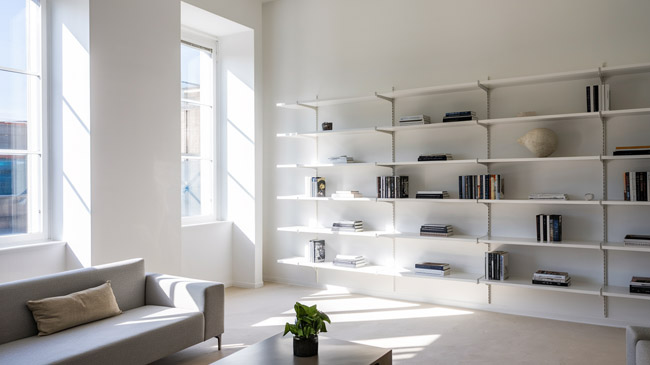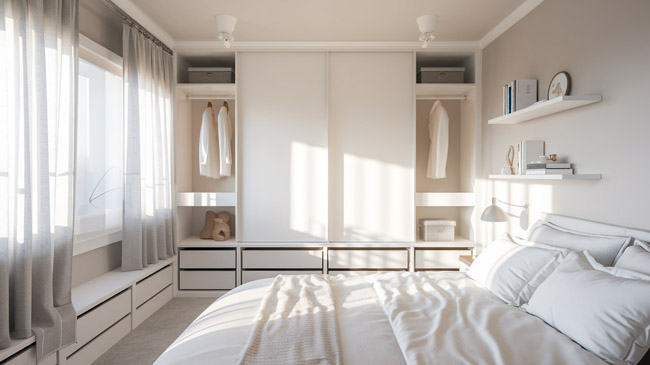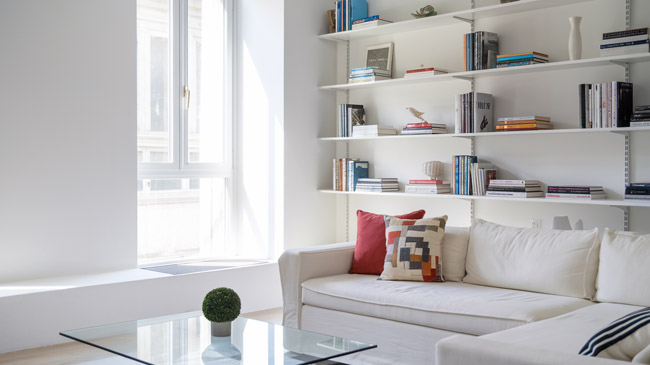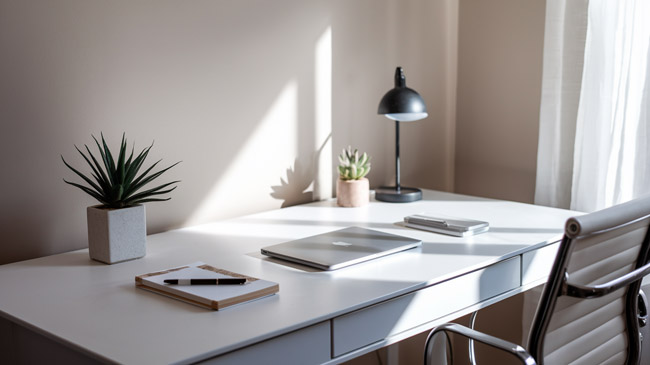Spring is in the air, and with it comes the perfect opportunity for a fresh start. As you look around your home, does the clutter feel overwhelming? Minimalist decluttering tips can help you create the simpler, more organized living space you’ve been yearning for. You’re not alone in this struggle—many of us battle with the accumulation of unnecessary items, leading to stress and a sense of chaos in our daily lives.
Imagine walking into a home that’s clean, organized, and free from excess. A space where everything has its place, and you can breathe easier knowing you’re surrounded by only the things that truly matter. This isn’t just a dream—it’s achievable through minimalist decluttering. In this blog post, we’ll explore 10 practical tips to help you embrace minimalism and create a fresh, clutter-free environment for spring. From starting with a clean slate to maintaining your newly organized space, we’ll guide you through each step of the process. Are you ready to transform your home and your life? Let’s dive in!
Start with a Clean Slate
A. Assess your living space
Before diving into your decluttering journey, take a moment to evaluate your living space. Walk through each room with a critical eye, noting areas that feel cluttered or overwhelming. Pay attention to:
- Surfaces that collect items
- Overflowing storage spaces
- Areas that cause stress or frustration
Use this checklist to guide your assessment:
- Living room
- Kitchen
- Bedroom(s)
- Bathroom(s)
- Home office
- Storage areas (closets, garage, basement)
B. Set decluttering goals
Now that you’ve assessed your space, it’s time to set clear, achievable goals. Consider the following:
- Specific areas to tackle
- Amount of items to remove
- Desired outcome for each space
C. Create a timeline for your spring cleaning
With your goals in place, develop a realistic timeline for your decluttering project. Break down larger tasks into manageable chunks and allocate specific days or time slots for each area. Consider factors such as:
- Your daily schedule and commitments
- The complexity of each decluttering task
- Any upcoming events or deadlines
Remember to be flexible and adjust your timeline as needed. The key is to maintain momentum without feeling overwhelmed. With a clear plan in place, you’re ready to tackle the next step in your minimalist spring cleaning journey.
The One-In, One-Out Rule

Implement the rule for new purchases
The One-In, One-Out Rule is a powerful strategy for maintaining a clutter-free home. To implement this rule effectively, follow these steps:
- Assess your current belongings
- Create a inventory list
- Set a “one-in, one-out” policy
- Evaluate new purchases carefully
By following these steps, you’ll ensure that your possessions remain manageable and purposeful.
Apply to clothing and accessories
Applying the One-In, One-Out Rule to your wardrobe is particularly effective. When you bring a new clothing item or accessory home, immediately select a similar item to donate or discard. This practice not only keeps your closet organized but also helps you curate a more intentional and versatile wardrobe.
Extend to home decor and gadgets
The rule can be easily extended to other areas of your home. For electronics, consider upgrading only when necessary and recycling old devices. With home decor, rotate seasonal items instead of accumulating more. This approach ensures your living space remains fresh and uncluttered while allowing you to enjoy new items guilt-free.
Embrace the 90/90 Rule

Identify unused items in the past 90 days
The 90/90 rule is a powerful decluttering technique that helps you make decisive choices about your belongings. Start by examining each item in your space and asking yourself, “Have I used this in the last 90 days?” Be honest with yourself and create two piles:
- Items used within the last 90 days
- Items not used within the last 90 days
This process will help you visualize how much of your stuff is actually serving a purpose in your daily life.
Evaluate if you’ll use them in the next 90 days
For items in the “not used” pile, ask yourself, “Will I use this in the next 90 days?” Consider factors such as:
- Seasonal items (e.g., winter coats in summer)
- Special occasion items (e.g., formal wear)
- Sentimental value
Make decisions to keep, donate, or discard
Based on your evaluation, make decisive actions:
- Keep: Items you’ve used recently or will use soon
- Donate: Usable items that no longer serve you
- Discard: Broken, expired, or unusable items
Remember, the goal is to surround yourself with items that add value to your life. By applying the 90/90 rule, you’ll create a more intentional and clutter-free living space.
Now that you’ve tackled the 90/90 rule, let’s explore how to digitize your documents for even more space-saving benefits.
Digitize Your Documents

Scan important papers
In the digital age, there’s no need to keep piles of papers cluttering your space. Start by identifying essential documents such as:
- Birth certificates
- Tax records
- Legal papers
- Medical records
Use a high-quality scanner or smartphone app to create digital copies. Ensure the scans are clear and legible.
Organize digital files
Once you’ve scanned your documents, it’s crucial to organize them effectively:
- Create a logical folder structure
- Use descriptive file names
- Implement a consistent naming convention
- Add tags for easy searching
Safely dispose of physical copies
After digitizing, securely dispose of unnecessary physical documents:
- Use a cross-cut shredder for sensitive information
- Recycle non-sensitive papers
- Consider professional document destruction services for large volumes
Remember to keep original copies of vital documents like birth certificates and marriage licenses. Store these in a fireproof safe or safety deposit box.
By digitizing your documents, you’ll free up physical space and have easier access to important information. This streamlined approach aligns perfectly with minimalist principles, helping you maintain a clutter-free environment. With your documents organized digitally, let’s move on to simplifying another crucial area of your home: your wardrobe.
Streamline Your Wardrobe
Create a capsule collection
A capsule wardrobe is the cornerstone of a streamlined closet. It consists of versatile, high-quality pieces that can be mixed and matched to create numerous outfits. Here’s how to build your own:
- Choose a color palette
- Select essential pieces
- Focus on versatility
- Limit accessories
Use the hanger trick
This simple yet effective method helps identify which clothes you actually wear:
- Hang all clothes with hangers facing the same direction
- After wearing an item, return it with the hanger facing the opposite way
- After 3-6 months, evaluate the untouched items
Donate or sell unused clothing
Once you’ve identified your unused items, it’s time to let them go:
- Donate to local charities or shelters
- Sell on online platforms or consignment shops
- Host a clothing swap with friends
By streamlining your wardrobe, you’ll save time, reduce decision fatigue, and create a more organized space. With these techniques, you’ll be well on your way to a minimalist closet that reflects your personal style and needs.
Tackle the Kitchen Clutter

Pare down duplicate utensils
Start your kitchen decluttering journey by tackling those overflowing utensil drawers. Assess each item and keep only the essentials. Here’s a quick guide to help you pare down:
Remember, quality trumps quantity. Choose durable, multi-purpose utensils to maximize functionality while minimizing clutter.
Minimize single-use appliances
Single-use appliances often contribute to kitchen chaos. Consider these alternatives:
- Replace bulky juicers with a multi-purpose blender
- Swap specialized egg cookers for a versatile pan
- Use a regular oven instead of a separate bread maker
By focusing on versatile tools, you’ll free up valuable counter and storage space.
Organize pantry with clear containers
Transform your pantry into a model of minimalist efficiency:
- Decant dry goods into clear, airtight containers
- Label each container clearly
- Group similar items together
- Use tiered shelving for better visibility
This approach not only looks sleek but also helps prevent food waste by keeping inventory visible and fresh.
With these strategies in place, your kitchen will become a streamlined, functional space that embodies minimalist principles. Next, we’ll explore how to apply these decluttering techniques to create a serene bathroom environment.
Simplify Your Bathroom
Declutter expired products
Start your bathroom simplification journey by tackling expired products. These items not only take up valuable space but can also be harmful to use. Here’s a quick guide to help you declutter:
- Check expiration dates
- Dispose of expired items properly
- Assess the necessity of remaining products
Minimize toiletries
After removing expired products, focus on minimizing your toiletries. Consider these strategies:
- Opt for multi-purpose products
- Choose quality over quantity
- Stick to essentials and avoid impulse purchases
Organize with space-saving solutions
With a decluttered and minimized collection, it’s time to organize efficiently:
- Use vertical space with hanging organizers
- Invest in drawer dividers for smaller items
- Install floating shelves for frequently used products
- Utilize under-sink storage with stackable containers
By implementing these strategies, you’ll create a serene, clutter-free bathroom environment. This simplified space will not only look better but also make your daily routines more efficient and enjoyable. As we move forward, we’ll explore how to create a minimalist workspace, further extending the benefits of decluttering to your professional life.
Create a Minimalist Workspace
Clear desk surfaces
A clutter-free desk is the foundation of a minimalist workspace. Start by removing all items from your desk and sorting them into three categories: essential, occasional, and unnecessary. Keep only the essentials on your desk surface, store occasional items within reach, and eliminate or relocate unnecessary items.
Consider using the following organization strategy:
- Essential items: Computer, keyboard, mouse
- Occasional items: Notebook, pen holder, small plant
- Unnecessary items: Old documents, trinkets, excess stationery
Organize digital files and apps
Digital clutter can be just as distracting as physical clutter. Implement a system to organize your digital workspace:
- Create a logical folder structure for your files
- Use descriptive file names for easy searching
- Regularly delete unnecessary files and empty the recycle bin
- Uninstall unused applications
- Organize your desktop icons into folders or remove them entirely
Implement a paperless system
Reducing paper usage not only declutters your workspace but also benefits the environment. Follow these steps to go paperless:
- Scan important documents and store them digitally
- Use cloud storage for easy access and backup
- Opt for digital invoices and receipts
- Utilize note-taking apps instead of physical notebooks
- Set up automatic bill payments to eliminate paper statements
By implementing these strategies, you’ll create a minimalist workspace that promotes focus and productivity. With a clear desk, organized digital files, and a paperless system, you’ll be well-equipped to tackle your work efficiently. Next, we’ll explore how to maximize storage efficiency throughout your entire living space.
Maximize Storage Efficiency

Use vertical space
When maximizing storage efficiency in a minimalist home, utilizing vertical space is crucial. By thinking upwards, you can significantly increase your storage capacity without cluttering floor space. Here are some effective ways to make the most of your vertical space:
- Install floating shelves
- Use over-the-door organizers
- Hang pegboards for versatile storage
- Mount wall-mounted cabinets
Invest in multi-functional furniture
Multi-functional furniture is a game-changer for minimalist living. These clever pieces serve multiple purposes, reducing the need for additional items and maximizing your space efficiency.
Implement the “everything has a home” rule
This principle is essential for maintaining an organized and clutter-free space. By designating a specific spot for each item, you’ll always know where things belong and can easily return them after use. This practice not only keeps your space tidy but also saves time in the long run.
Now that we’ve explored ways to maximize storage efficiency, let’s look at how to maintain your newly organized minimalist space.
Maintain Your Minimalist Space
Schedule regular decluttering sessions
To maintain your minimalist space, it’s crucial to establish a routine for decluttering. Set aside time each week or month to reassess your belongings and keep your space organized. Here’s a simple schedule you can follow:
By sticking to this schedule, you’ll prevent clutter from accumulating and maintain the peaceful atmosphere of your minimalist home.
Practice mindful consumption
Mindful consumption is key to preserving your minimalist lifestyle. Before making a purchase, ask yourself:
- Do I really need this item?
- Will it add value to my life?
- Does it align with my minimalist goals?
By being more intentional with your purchases, you’ll naturally reduce the influx of unnecessary items into your home.
Enjoy your simplified living space
The ultimate goal of minimalism is to create a space that brings you joy and peace. Take time to appreciate the benefits of your decluttered home:
- Reduced stress from a tidy environment
- More time for activities you love
- Easier cleaning and maintenance
Remember, minimalism is a journey, not a destination. Continuously evaluate your space and habits to ensure they align with your evolving needs and lifestyle.

Decluttering your living space using these minimalist tips can transform your home and mindset for a fresh spring start. By implementing strategies like the one-in, one-out rule, embracing the 90/90 principle, and digitizing documents, you’ll create a more organized and peaceful environment. Streamlining your wardrobe, tackling kitchen clutter, and simplifying your bathroom will further enhance your minimalist journey.
Remember, the key to maintaining a clutter-free space is consistency and mindfulness. Create a minimalist workspace, maximize storage efficiency, and regularly assess your belongings to keep your newly organized space intact. As you embark on this minimalist adventure, you’ll likely find that less truly is more, leading to increased productivity, reduced stress, and a renewed sense of calm in your daily life.


